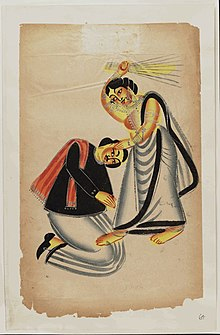New research indicates high-rates of domestic abuse against men
Today is international men’s day. This is an opportunity to shed light on issues faced by men that typically lie in the shadows of society. One of these issues is Intimate Partner Violence (IPV) against men.
The popular image of IPV is based on the familiar gender stereotype of a male villain and a female victim. But that stereotype paints an incomplete picture, with new research indicating a high number of male victims of domestic abuse.
Research on Domestic Violence
A recent UK government survey indicated that 9 percent of males had experienced some form of partner abuse, which amounts to around 1.4 million men. This includes stalking, physical violence and sexual assault. Indeed, a seminal US study found that male IPV victims are often slapped, kicked, punched, grabbed or choked by their partners.
Interestingly, a growing body of international research indicates that men and women experience IPV in similar proportions. For example, a recent survey from Canada’s national statistical agency concluded that “equal proportions of men and women reported being victims of spousal violence during the preceding 5 years (4 percent respectively).”
The aforementioned surveys indicate that small proportions of men (less than 20 percent of victims) will tell the police or a health professional about their victimization. This may be due to well-grounded fears that they will be scorned, ridiculed, or disbelieved by these authorities.
Indeed, a recent research paper by Dr. Elizabeth Bates from the University of Cumbria found that the overarching experience of male IPV victims was that “no one would ever believe me.” One victim noted “I told friends, they laughed while another stated … the police, they laughed.”
Incredulously, laughter is a common response to male victims of IPV. This is illustrated in the short “social experiment” video here, examining public reactions to a male being abused by a female on a street. This video has over 8 million views on YouTube and is a powerful educational tool.
The Mankind Initiative
The above video was created by the Mankind Initiative, a leading British charity supporting male victims of domestic abuse. Led by the indefatigable Mark Brooks OBE, the Mankind Initiative held its national conference on male victims of domestic abuse last week, which I attended.
This event attracted around 100 people. Attendees heard a range of engaging presentations from researchers, service-providers and IPV victims. The presentations overlapped with the research literature, with IPV victim Tim noting how the police and others tended to dismiss his story.
Likewise, Dr. Nicola Graham-Kevan from the University of Central Lancashire reported her latest research indicating that male IPV victims are often pathologized, and sometimes regarded with suspicion by the very agencies that should be helping them.
Nevertheless, there was a palpable air of optimism pervading the event. The conference was attended by a variety of senior figures including police officers, health care providers, lawyers, community workers, military representatives, and local government employees. This indicates a growing awareness of the seriousness of the issue among key stakeholders.
Moreover, the conference heard how the mainstream media is starting to take this issue seriously. For example, the BBC produced a poignant documentary earlier this year entitled “abused by my girlfriend.” A short-version has received over 5 million views on YouTube.
This documentary reports the painful story of 22-year-old Alex Skeel, who was repeatedly knifed, scolded, and hammered by his then-girlfriend. The police supported Alex throughout his ordeal, and his ex-girlfriend recently received a 7-year prison sentence.
All this may reflect a turning of the tide, at least with regards to growing public awareness and increased media interest in IPV against men.
The Way Ahead
The momentum must be maintained to further prevent and address IPV against men. Three discrete actions could assist in this regard.
First, official service provision for male victims of IPV remains scant. Indeed, a recent government report noted that there were 627 shelters for abused women in Canada, but only 6 percent of these admitted men, with zero shelters solely for men. In the UK, it has been reported that only around 1 percent of refuge beds are reserved for men. This demands more provision for male victims, without detracting from current provision for female victims.
Second, there is a pressing need for education and training in these issues for key stakeholders including the police, health-care providers, and the judiciary. Such efforts should enlighten stakeholders about the realities of IPV against men, while challenging gendered stereotypes built on the false dichotomy of a male villain and a female victim.
Third, there is an acknowledged need for interventions aimed at women who abuse men. Indeed, the British charity Respect notes that “Most domestic violence perpetrator programmes have been designed for men in heterosexual relationships.” More research and action should focus on developing, validating and disseminating prevention programs aimed at female domestic abusers.
Domestic violence against men is no laughing matter. It is a deadly serious issue in need of concerted action. Let’s hope the tide begins to turn.



